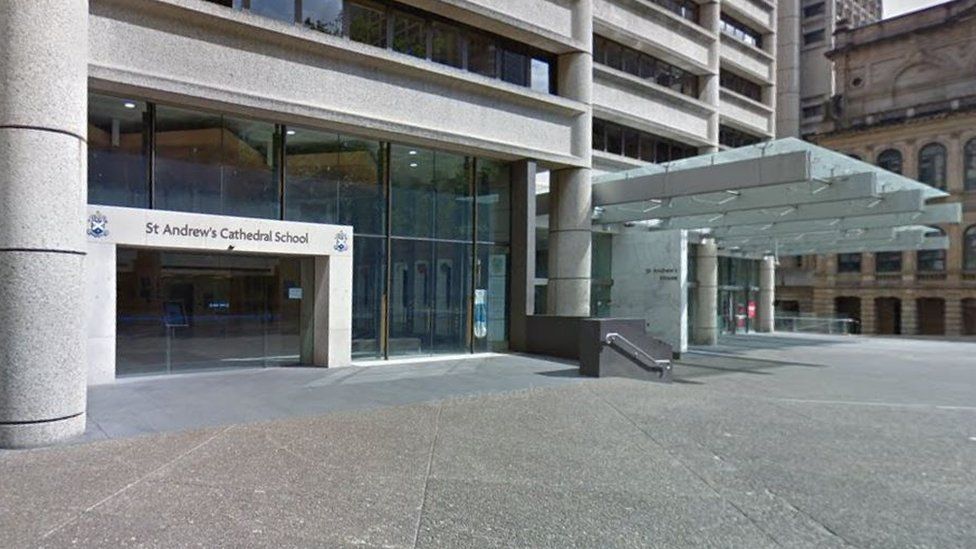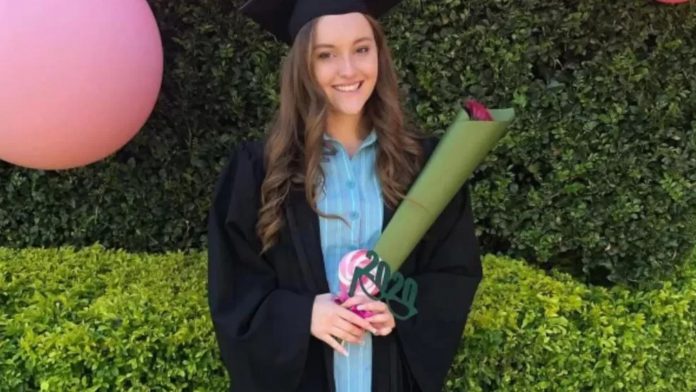On Thursday, as Australia woke to the news a body had been found inside the bathroom of an elite Sydney private school, horror rippled around the country.
Police had turned up at St Andrew’s Cathedral School just before midnight, after a chilling triple-zero emergency call.
There they encountered a “confronting scene” – 21-year-old water polo coach Lilie James, dead, with extensive head injuries.
Detectives believe she was murdered – allegedly with a hammer – hours earlier, according to local media who have cited anonymous sources.
CCTV had reportedly captured her colleague, 24-year-old hockey coach Paul Thijssen, entering the bathroom after her. Thijssen, who also made the call to authorities, later emerged alone.
Though police have made no public comments about a potential motive, local media have reported Ms James had recently ended a relationship with Thijssen. They had been seeing each other for only five weeks.
Thijssen had vanished after calling in the tip-off from Vaucluse, and police launched a major manhunt focused on the cliffside suburb.
There they found items “associated with the homicide” – allegedly the murder weapon – in a bin, and on Friday morning, a body which was later confirmed to be Thijssen.
‘Stolen from us’
As friends and family reckoned with the death of Ms James, they remembered her as kind friend and an avid sportswoman.
Along with water polo, she loved dancing and swimming, doing both competitively as a teenager. And she had been studying a sports business degree at university, working at the school on the side.
“She was vibrant, outgoing, and very much loved by her family and friends,” Ms James’s family said in a statement.
“We are devastated and heartbroken.”
Ms James was “stolen from us”, family friend Daniel Makovec wrote in a fundraising appeal for the family.
“We will be grieving this loss forever,” he said.

In a note to parents, the head of St Andrew’s Cathedral School said she was deeply concerned for all involved.
“The horrors of evil do not, and will not, define our community, that is my oath,” Julie McGonigle said.
Mr Thijssen, a Dutch national, was a former sports captain at the school before he became a staff member.
New South Wales Premier Chris Minns too sent his condolences to Ms James’s family, describing her death as a “horrible, horrible crime”.
“[It is] one of the worst that I’ve seen in my public life, and I can only imagine what [the] family is going through right now,” he said.
An ‘insidious’ problem
The case has reignited conversation about how Australia has long struggled to move the needle on what is often called an “epidemic” of domestic violence in the country.
Ms James is the 41st Australian woman this year to die allegedly as a result of gendered violence, according to the Counting Dead Women project.
In the past 10 days alone, three women – South Australian Krystal Marshall, an unnamed Canberra woman and Ms James – have all allegedly been killed by men they knew. All were inside their own homes or workplace.
Gendered violence reform campaigner Tarang Chawla – whose sister was murdered by her partner in 2015 – said Ms James’s death is a “tragic reminder of the dark, insidious reality of men’s violence against women”.
“I look at the photos of Lilie and I remember my own 23-year-old sister Niki and how I felt after she was murdered,” he wrote on Instagram.
“Lilie, I’m sorry we failed you.”
And while the nation grieves, urgent questions are again being asked about how to keep women safe.
Australia has had a National Plan to End Violence against Women and Children since 2010, but the statistics show the rates of violence remain stubbornly high.
A new 10-year plan was introduced last year – this time with actionable targets. It places emphasis on early intervention, improving police and justice responses, creating more emergency housing and increasing the trauma support available to victim survivors.
But CEO of Full Stop Australia, Karen Bevan, says it is concerning “cultural attitudes towards gender equality and violence against women” that underpin Australia’s domestic violence scourge.
According to a recent survey, while more than 90% of Australians recognise violence against women is a problem in the country, just under half say it is a problem in their own suburb or town.
The same study also found around four in 10 Australians wrongly believe men and women are equally likely to commit domestic violence.
Ms Bevan says that addressing “myths and misconceptions” of how and why violence against women occurs and greater “community understanding” is key.
NSW Minister for Domestic Violence Prevention, Jodie Harrison, has also appealed for the community to better call out “inappropriate behaviour” in the wake of Ms James’s death.
“That’s really the start of a lack of safety for women and children,” she told Guardian Australia.
“It’s up to every single one of us. Government can fund programs but unless individuals take responsibility for themselves, that government funding will be wasted.”
But advocates say more funding and measures to track progress are also needed.
“For all the violence elsewhere that we condemn, Australia has a problem that we urgently need to fix,” Mr Chawla said.
ALSO READ:

